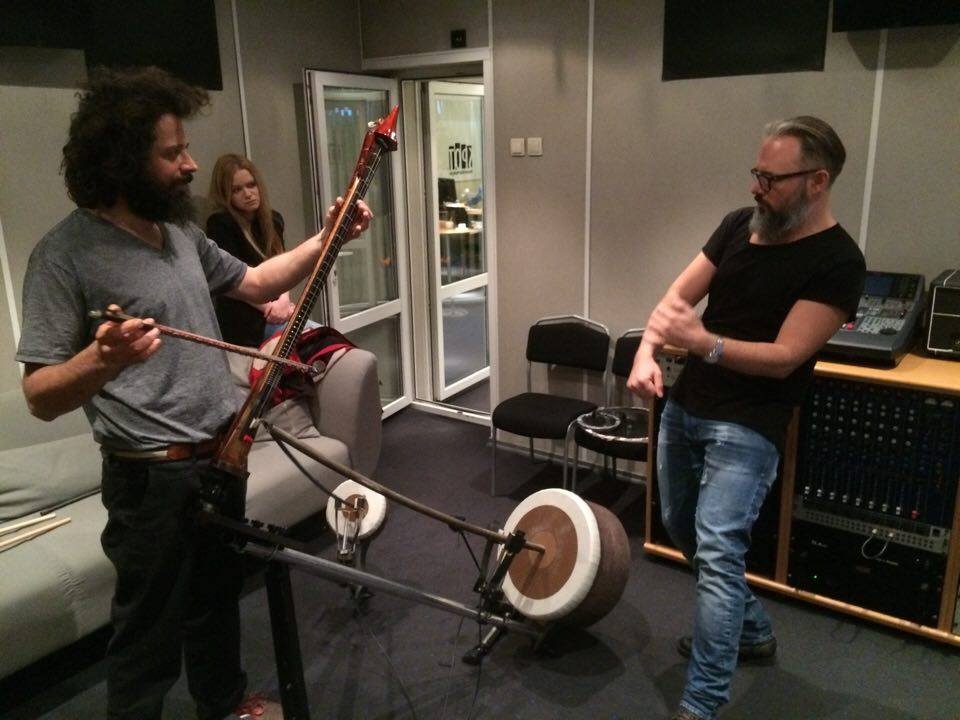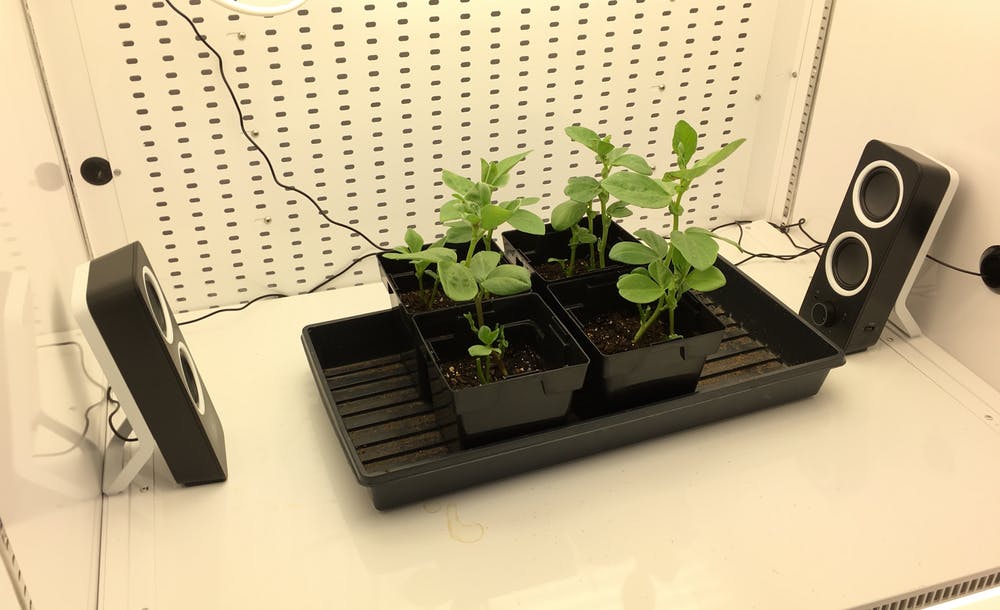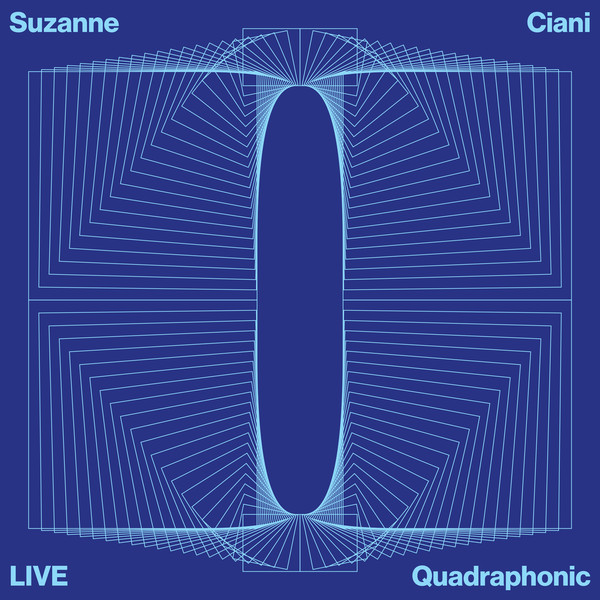Uncertainty Theory #15
About the musical instrument Yaybahar and about music and its influence on plants.
AUDIOS
Sample Instrument Yaybahar on the platform of Sonic Picnic.
Music to Soothe the Savage Snake Plant - Mort Garson (track 10 - Mother Earth's Plantasia (1976)).
Excerpt from LIVE Quadraphonic - Suzanne Ciani (2018)
YAYBAHAR PROGRAM MUSICAL INSTRUMENT
Yaybahar is a totally free of electricity and totally acoustic instrument designed by Gorkem Sen. The vibrations of the strings are transmitted through the coil springs to the drums at the ends. These vibrations are converted into sound by the membranes that resonate back and forth with the coil springs. This results in a unique listening experience with a hypnotic surround sound. Görken Sen is the Turkish musician who developed this musical instrument. It is a stringed (acoustic) instrument that sounds like a synthesizer.


MUSIC AND PLANTS
Are plants able to listen to music? In what ways can they respond to music? Well, because plants breathe through a variety of different "mouths"also called "stomatas"and it has been found that the "stomata" of a plant can respond to music. Several years ago, scientists at the University of California, San Diego, discovered a signaling mechanism that controls the "stomata" of a plant. The two cells that make up the "stomata" are composed of specialized cells (guard cells) that are attuned to the resonant frequency of calcium. The "stomata" closes when exposed to this frequency. However, if this frequency is not exactly the correct one, the "stomata" opens again after one hour. This would happen even if the calcium concentration were high enough for the "stomata"under normal conditions would close. Experiments have shown that exposure to high frequencies is more or less responsible for increased gas exchange, and not only after one hour.
MUSIC ENHANCES GROWTH
When specific music, loud tones or bird song cause the plant to vibrate, although not at the exact frequency of the calcium resonance, the "stomatas" will open after a period of time, even though the plant would keep them closed under normal circumstances. Music could also influence seed germination. A study of the "Journal of Alternative and Complementary Medicine." describes an experiment in which music produced a higher germination percentage (P < 0.002) and faster germination (P < 0.000002). It appears, however, that sound had no significant effect on germination. So it turns out, multiple frequencies are significant, and since germination is all about hormones, it is quite possible that skeletal resonance plays an important role here.
Tests have shown that a leaf fertilizer applied to the plant would have a greater effect on plant growth and development if the plant's leaves and leaves were applied to the plant. "stomata" will be open. This is logical, since the plants absorb the fertilizer through their "stomata". Combinations of frequency and plant fertilizers are available for a wide variety of crops. But there are some drawbacks to this method. If the "stomata" are forced to remain open, the plant will not be able to control the amount of water it loses through transpiration, and is at risk of dehydration. Therefore, exposing the plant to more than 3 hours of music per day could endanger its health.

DON'T OVERDO IT WITH THE MUSIC
Your favorite plants could also suffer negative effects if the volume or frequency of the music is too high. This is an effect that cannot yet be explained, based on the opening and closing of the "stomata". The negative influence of too high a frequency could be accounted for using a technique known as "skeletal resonance". (Shell resonance). In addition to the resonance, which causes the opening of the "stomata" under the influence of music or specific tones, there is another technique that could explain such effects on our plants.
This technique is known as skeletal resonance and stimulates or inhibits protein synthesis in plants. Various tones play an important role here. The theory behind it is that proteins, which consist of amino acids, are synthesized in tune with the vibration. Each amino acid should have its own frequency and thus each protein its own frequency range. So, theoretically the correct sequence of tones should stimulate the creation of proteins through resonance.
The influence of resonance on the human body has also been the subject of study. TENS Transcutaneous Electro Neural Stimulation (Transcutaneous Electro Neural Stimulation) is a technique that uses a specific frequency to stimulate the generation of specific substances in the body. For example, it is believed that a frequency of 10 Hertz stimulates the creation of the neurotransmitter serotonin (the same frequency as alpha waves). And you know what? Serotonin is an amino acid.
The reason why different tones can have so much influence on plants is that hormones, such as auxin, which is one of the substances responsible for cell extension and fruit formation, consist of only two amino acids. Allowing the plant to vibrate long enough at the frequencies of these two amino acids should increase the production of desired plant hormones, resulting in larger buds.
PLANTS PREFER CLASSICAL MUSIC
One possible explanation why plants react positively to classical music, and not to heavy metal for example, is that classical music contains purer tones, while heavy metal is full of guitar effects such as distortion or straight marching which certainly cannot be considered pure tones!
GREEN EARS
Although techniques to encourage plant growth have been around since time immemorial, the art itself is disappearing and today's growers possess only a part of the wisdom of their ancestors. Even now it is not exactly clear how music influences plant development and growth, but more and more is being discovered about the physics of resonance and we are closer than ever to solid scientific proof and theories in this area. Maybe in twenty years people will laugh if you tell them that plants have no ears!
Source: canna.com

